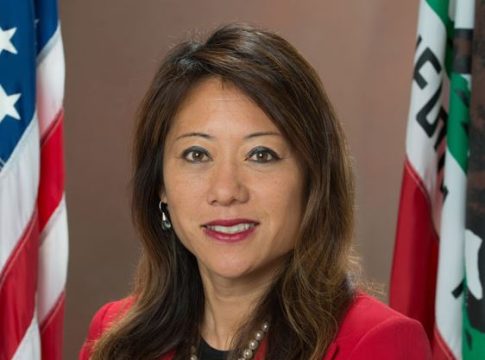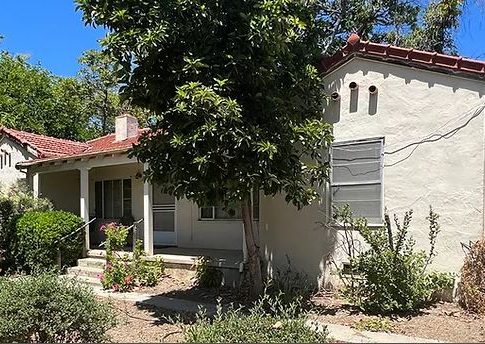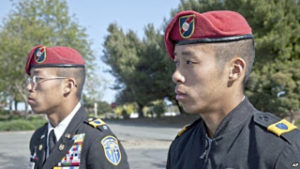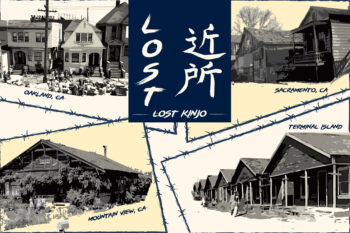What does the Asian American & Pacific Islander community look like to number crunchers? Of course, there is more to AAPI’s that can’t be translated into numbers; but it helps to see how non-AAPI see us.
Generally – as a group, we’re younger than the rest of the U.S. and a lot of us prefer living in California followed by New York. If you want to stop feeling like a minority, go to Hawaii.
Here is some information from the U.S. Census Bureau with links to the source of the numbers. This is the type of data that could be helpful for those of you writing grants and trying to establish programs. I apologize I didn’t have fancy graphs for those of you more visually inclined, but due to my limited resources, I can only give the numbers.
In 1992, Congress expanded the observance of Asian American Pacific Islander Heritage Month to a month-long celebration. Per a 1997 U.S. Office of Management and Budget directive, the Asian or Pacific Islander racial category was separated into two categories: one being Asian and the other Native Hawaiian and Other Pacific Islander. Thus, this Facts for Features contains a section for each.
LATEST STORIES
Asians
20.3 million
Estimated number of U.S. residents in 2014 who were Asian alone or in combination. Source: Vintage 2014 Population Estimates
6.3 million
Asian alone or in combination population in California in 2014. The state had the largest Asian population, followed by New York (1.8 million). The Asian alone or in combination population represented 56.1 percent of the total population in Hawaii. Source: Vintage 2014 Population Estimates
4.5 million
Number of Asians of Chinese, except Taiwanese, descent in the U.S. in 2014. The Chinese (except Taiwanese) population was the largest Asian group, followed by Asian Indians (3.8 million), Filipinos (3.8 million), Vietnamese (2.0 million), Koreans (1.8 million) and Japanese (1.4 million).
These estimates represent the number of people who reported a specific detailed Asian group alone, as well as people who reported that detailed Asian group in combination with one or more other detailed Asian groups or another race(s). Source: 2014 American Community Survey, Table B02018 and here.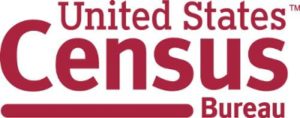
INCOME, POVERTY & HEALTH INSURANCE
$72,689
Median income of households headed by the Asian alone or in combination population in 2014. Median household income differed greatly by Asian group. For Asian Indians, for example, the median income in 2014 was $101,591; for Bangladeshi, it was $44,512. Source: 2014 American Community Survey, Table S0201 and here.
12.5%
Poverty rate for the Asian alone or in combination population in 2014. Source: 2014 American Community Survey, Table S0201
10.2%
Percentage of Asian alone or in combination population without health insurance coverage in 2014. Source: 2014 American Community Survey, Table S0201
BUSINESS
1.9 million
Estimated number of Asian-owned firms nationally in 2012, up from 1.5 million or 23.8 percent from 2007. Source: 2012 Survey of Business Owners-Asian Owned Firms: 2012 and here.
74.9%
Estimated percent of the 1.9 million Asian-owned firms that had no paid employees. Of all U.S. businesses, 80.4 percent were nonemployer firms.Source: 2012 Survey of Business Owners-Asian Owned Firms: 2012 and here.
$135.7 billion
Estimated sales/receipts reported by Asian firms owned by women in 2012. Male-owned Asian firms reported sales of $474.3 billion.Source: 2012 Survey of Business Owners-Asian Owned Firms: 2012
EDUCATION
50.6%
Percentage of the Asian alone or in combination population 25 and older who had a bachelor’s degree or higher level of education. This compared with 30.1 percent for all Americans 25 and older. Source: 2014 American Community Survey, Table S0201 and here.
86.8%
Percentage of the 25-and-older Asian alone or in combination population who had at least a high school diploma. This estimate is not statistically different than the 86.9 percent of the total population.Source: 2014 American Community Survey, Table S0201 and here.
21.2%
Percentage of 25-and-older Asian alone or in combination population who had a graduate or professional degree. This compared with 11.4 percent for all Americans 25 and older. Source: 2014 American Community Survey, Table S0201 and here.
VOTING
704,000
Additional number of the Asian alone or in combination population who voted in the 2012 presidential election than in the 2008 election. Overall, 47.9 percent of Asians turned out to vote in 2012. A total of 4.3 million Asians voted in 2012.Source: The Diversifying Electorate—Voting Rates by Race and Hispanic Origin in 2012 (and Other Recent Elections) Table 2 and Figure 1
2.5%
Percentage of the Asian alone or in combination population who were military veterans in 2014. Source: 2014 American Community Survey, Table S0201
JOBS
49.5%
Proportion of civilian employed Asian alone or in combination population 16 and older who worked in management, business, science and arts occupations in 2014. Additionally, 20.7 percent worked in sales and office occupations; 17.2 percent worked in service occupations; 9.4 percent worked in production, transportation and material moving occupations; and 3.2 percent worked in natural resources, construction and maintenance occupations. Source: 2014 American Community Survey, Table S0201
INTERNET USE
87.1%
Percentage of Asian alone or in combination households in 2014 that reported a broadband Internet subscription. Source: 2014 American Community Survey, Table S0201
AGE DISTRIBUTION
33.8
Median age of the Asian alone or in combination population in 2014. The corresponding figure was 37.7 for the population as a whole.Source: Vintage 2014 Population Estimates, Table PEPASR5H
25.0%
Percentage of the Asian alone or in combination population that was under age 18 in 2014, while 9.9 percent was 65 or older.Source: Vintage 2014 Population Estimates, Table PEPASR5H
Native Hawaiians and Other Pacific Islanders
1.5 million
Estimated number of U.S. residents in 2014 who were Native Hawaiian or Other Pacific Islander alone or in combination.Source: Vintage 2014 Population Estimates http://factfinder.census.gov/bkmk/table/1.0/en/PEP/2014/PEPSR5H?slice=Year~est72014
369,688
Estimated number of Hawaii residents in 2014 who were Native Hawaiian or Other Pacific Islander, alone or in combination — the most of any state. California followed with 347,501. Hawaii also had the largest portion of its population being Native Hawaiian or Other Pacific Islander alone or in combination at 26.0 percent.Source: Vintage 2014 Population Estimates
555,208
Number of Native Hawaiians in the U.S. in 2014. The Native Hawaiian population was the largest detailed Native Hawaiian and Other Pacific Islander (NHPI) group, followed by Samoan (194,564) and Guamanian or Chamorro (133,569). These estimates represent the number of people who reported a specific detailed NHPI group alone, as well as people who reported that detailed NHPI group in combination with one or more other detailed NHPI groups or another race(s). Source: 2014 American Community Survey, Table B02019
INCOME, POVERTY & HEALTH INSURANCE
$55,296
Median income of households headed by Native Hawaiians and Other Pacific Islanders alone or in combination in 2014. Source: 2014 American Community Survey, Table S0201
18.4%
Poverty rate in 2014 of the Native Hawaiian and Other Pacific Islanders alone or in combination population. Source: 2014 American Community Survey, Table S0201
11.0%
Percentage without health insurance in 2014 for Native Hawaiians and Other Pacific Islanders alone or in combination.Source: 2014 American Community Survey, Table S0201
BUSINESS
54,749
Estimated number of Native Hawaiian and Other Pacific Islander-owned firms in 2012. The estimated number rose 45.3 percent from 37,687 in 2007. Source: 2012 Survey of Business Owners-Native Hawaiian and Other Pacific Islander-Owned Firms: 2012 and here.
52.9%
Estimated percent of the nation’s Native Hawaiian and Other Pacific Islander-owned firms that were in either California or Hawaii in 2012 (with 14,446 and14,537 firms, respectively).Source: 2012 Survey of Business Owners-Native Hawaiian and Other Pacific Islander-Owned Firms: 2012-Native Hawaiian and Other Pacific Islander-Owned Firms: 2012 and here.
24,982
Estimated number of Native Hawaiian and Other Pacific Islander firms owned by women in 2012. Estimated 20.8 percent (5,206 firms) were in the Health Care and Social Assistance services sector. Source: 2012 Survey of Business Owners-Native Hawaiian and Other Pacific Islander-Owned Firms: 2012
EDUCATION
20.9%
Percentage of Native Hawaiians and Other Pacific Islanders alone or in combination age 25 and older who had a bachelor’s degree or higher in 2014. This compared with 30.1 percent for the total population.Source: 2014 American Community Survey, Table S0201 and here
88.0%
Percentage of Native Hawaiians and Other Pacific Islanders alone or in combination age 25 and older who had at least a high school diploma in 2014. Source: 2014 American Community Survey, Table S0201 and here.
6.6%
Percentage of Native Hawaiians and Other Pacific Islanders alone or in combination age 25 and older who had obtained a graduate or professional degree in 2014. This compared with 11.4 percent for the total population this age. Source: 2014 American Community Survey, Table S0201 and here.
SERVING OUR NATION
7.1%
Percentage of Native Hawaiian and Other Pacific Islanders alone or in combination who were military veterans. Source: 2014 American Community Survey, Table S0201
JOBS
29.8%
Proportion of civilian employed Native Hawaiians and Other Pacific Islanders alone or in combination 16 and older who worked in management, business, science and arts occupations in 2014. Additionally, 26.2 percent worked in sales and office occupations, while 22.9 percent worked in service occupations; 12.6 percent worked in production, transportation and material moving occupations; and 8.5 percent worked in natural resources, construction and maintenance occupations. Source: 2014 American Community Survey, Table S0201
AGE DISTRIBUTION
27.7
Median age of the Native Hawaiian and Other Pacific Islander alone or in combination population in 2014. The median age was 37.7 for the population as a whole.Source: 2014 American Community Survey, Source: Vintage 2014 Population Estimates, Table PEPASR5H
33.0%
Percentage of the Native Hawaiian and Other Pacific Islander alone or in combination population that was under age 18 in 2014, while 6.4 percent was 65 or older.Source: Vintage 2014 Population Estimates, Table PEPASR5H
(Ed Diokno writes a blog :Views From The Edge: news and analysis from an Asian American perspective.)
(AsAmNews is an all-volunteer effort of dedicated staff and interns. You can show your support by liking our Facebook page at www.facebook.com/asamnews, following us on Twitter and sharing our stories).




